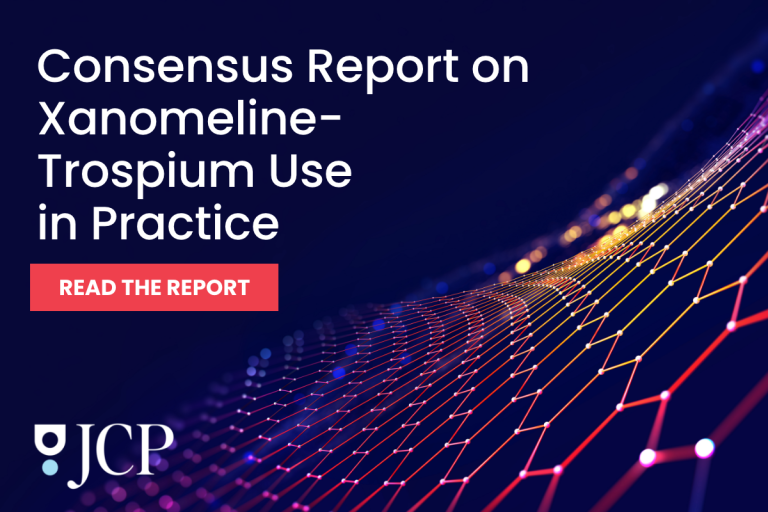Psych Congress 2025 | San Diego, CA
Symptom Stability During Transition to Xanomeline–Trospium in Schizophrenia
Switching from one antipsychotic to another is a common clinical scenario for people with schizophrenia, that is often prompted by tolerability issues or unresolved symptoms. Real-world data suggest that as many as half of individuals with schizophrenia switch antipsychotic medications within 6 to 24 months of initiation. Despite this, there is no standardized approach to antipsychotic switching, and strategies such as abrupt, taper, cross-taper, and plateau taper are all used in practice. Symptom control and relapse are crucial challenges during these transitions.
The combination of xanomeline, a dual M1/M4 muscarinic receptor agonist, with trospium, a peripherally restricted muscarinic antagonist, provides a novel treatment option with a distinct mechanism of action. A post hoc analysis of a recent phase 4, multicenter, open-label inpatient trial (NCT06572449) was presented at Psych Congress 2025. The study evaluated safety, tolerability, and symptom stability during the required washout of prior antipsychotic drugs (pAPDs) and subsequent initiation of xanomeline–trospium (X/T). The research aimed to demonstrate whether patients with stable schizophrenia symptoms could transition to X/T without experiencing destabilization.
Methods
The study enrolled adults aged 18–65 years with a DSM-5 diagnosis of schizophrenia, stable symptoms, a Positive and Negative Syndrome Scale (PANSS) total score ≤80, and a Clinical Global Impression–Severity (CGI-S) score ≤4. All participants were tapered off their prior antipsychotic medication before starting X/T.
This was a two cohort study in which all subjects received X/T twice daily for two consecutive 4-week periods. In Period 1, all participants initiated the starting dose of treatment (50 mg/20 mg) on an empty stomach for the first 7 days, followed by titration to 100 mg/20 mg during Days 8–14. From Day 15 onward, dosing differed between cohorts: Cohort 1 escalated to 125 mg/30 mg unless treatment-emergent adverse events required remaining at 100 mg/20 mg, while subjects in Cohort 2 remained on 100 mg/20 mg throughout. In Period 2, participants continued on the same dose established at the end of Period 1, but dosing was administered within 30 minutes of a meal or snack. Down-titration to 100 mg/20 mg was permitted for Cohort 1 if intolerability occurred or at the investigator’s discretion. Safety was assessed in all treated participants, and efficacy was evaluated in those completing the Day 56 efficacy assessment.
Results
A total of 173 participants were included in the safety population. The mean age was 44.6 years, 73% were male, and 74% were Black or African American. Baseline mean (±SD) PANSS total and CGI-S scores were 64.1 (±10.8) and 3.2 (±0.7), respectively.
Treatment-emergent adverse events (TEAEs) occurred in 73.4% of participants, though no serious adverse events were reported. Six participants (3.5%) discontinued due to TEAEs, with four deemed related to study drug. Procholinergic TEAEs were observed in 37% and anticholinergic TEAEs in 41% of participants. Nausea and vomiting were most common at the introduction of the 100 mg/20 mg dose, with peak incidence at week 2. These effects diminished with continued treatment and dose adjustments.
Regarding efficacy, mean PANSS total scores remained stable during the transition from pAPD to X/T, with no evidence of symptom worsening during the washout period. Across treatment, PANSS scores decreased modestly: –2.7 at Day 29 and –4.8 at Day 56 compared with baseline. These results were consistent across prior antipsychotic subgroups (aripiprazole, olanzapine, quetiapine, risperidone).
Conclusions
This analysis found that patients with stable schizophrenia symptoms could transition from prior antipsychotics to X/T without evidence of destabilization. The absence of PANSS score increases during washout and subsequent open-label treatment supports the potential feasibility of switching. While nausea and vomiting were the most frequent adverse events, they tended to resolve over time and with dose titration.
